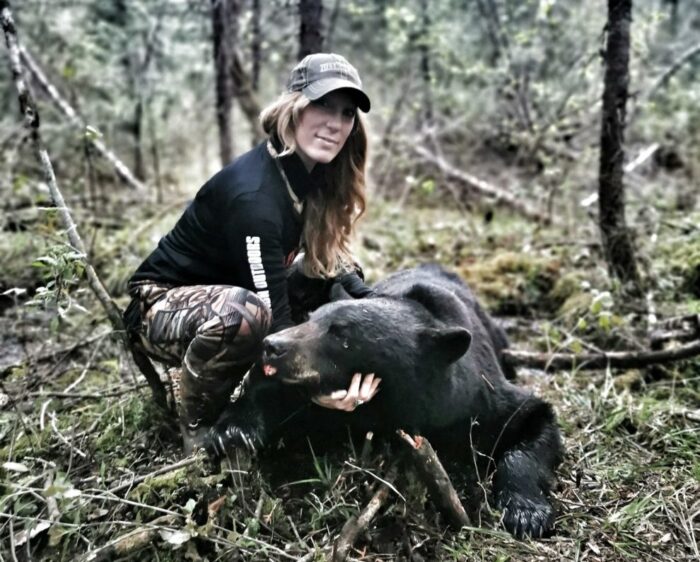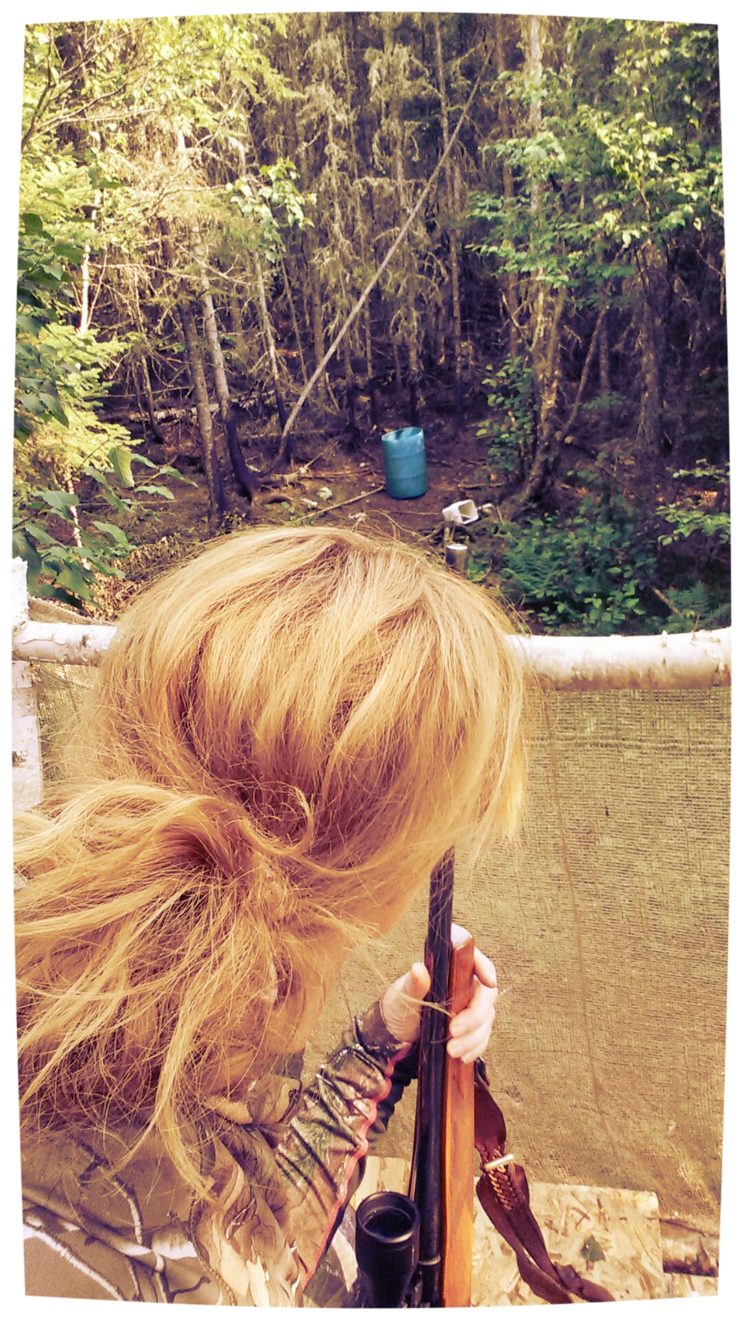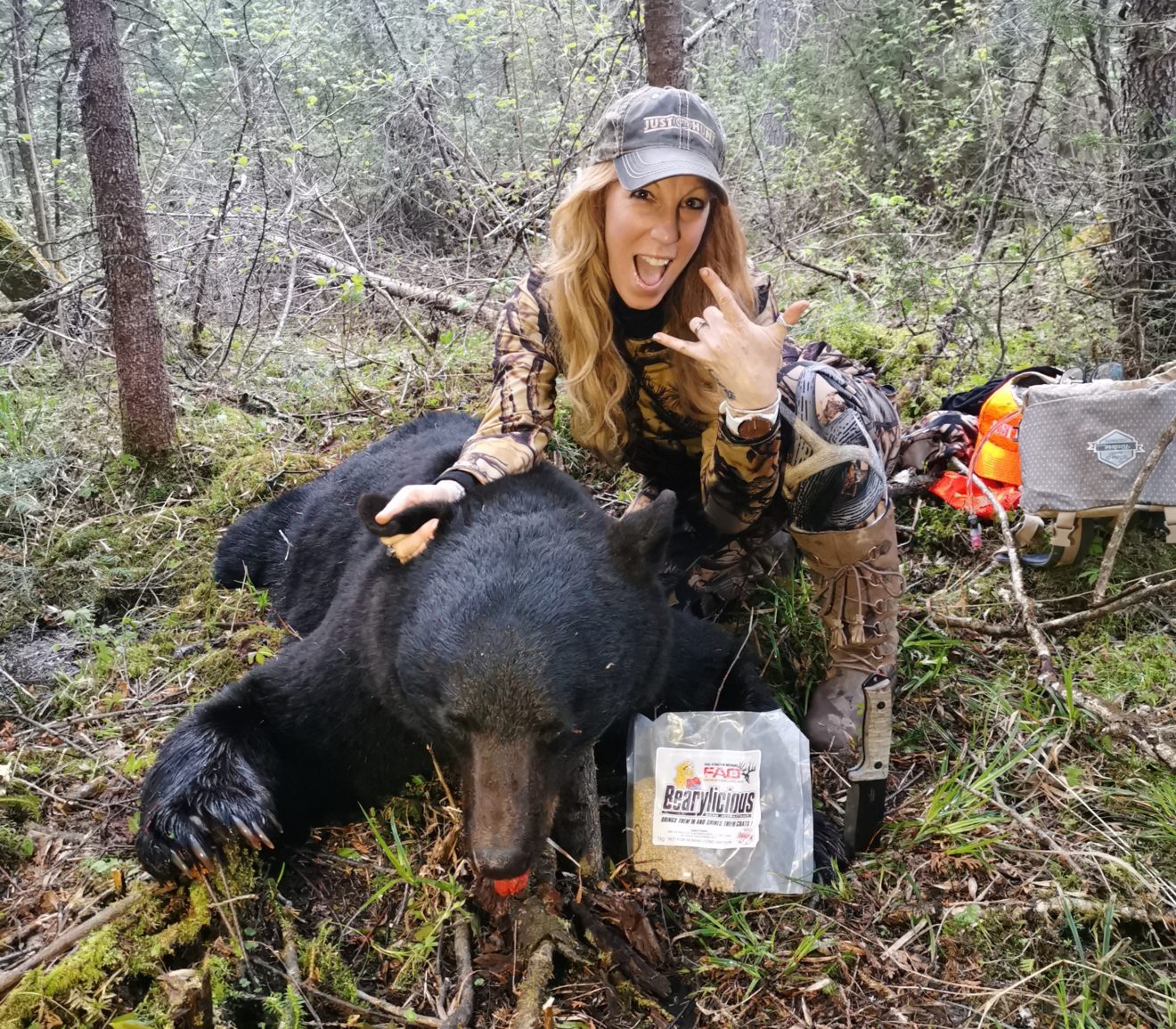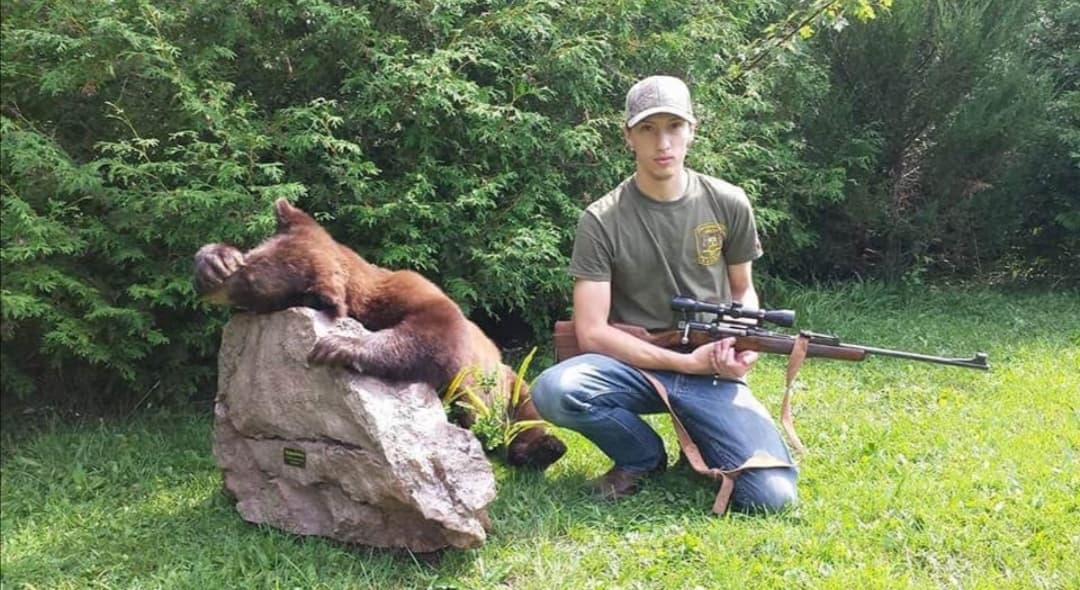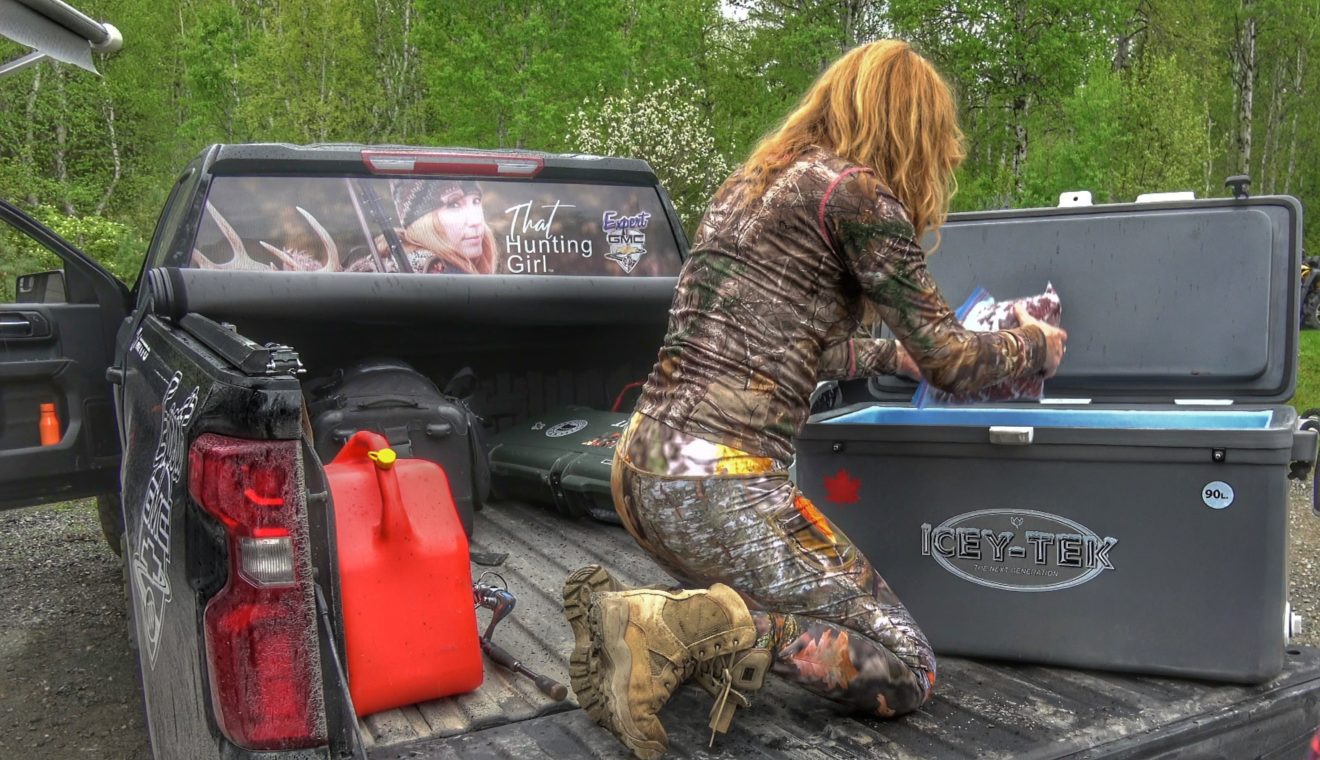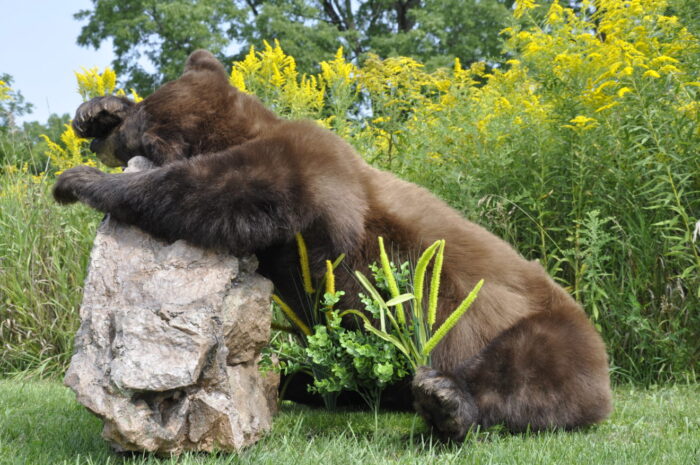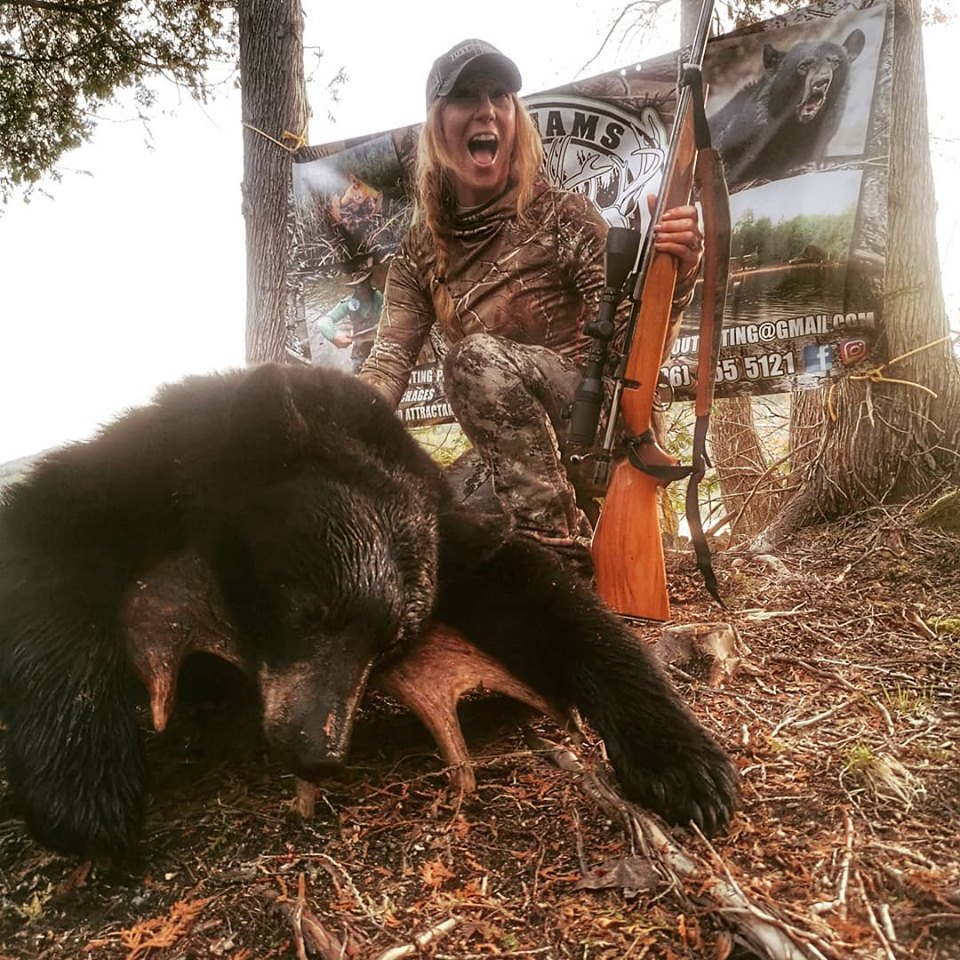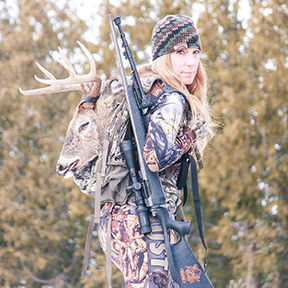Bear Hunting with Amanda Lynn Mayhew
I have been hunting bears for a number of years – often for meat, but more so than that. A harvested bear has so much to give back to the hunter, and to the larger community as a whole. It’s a family tradition, too, one that has a long heritage for me and my family dating all the way back to our ancestors.
On each bear hunt, I have witnessed a variety of situations, and with each hunt that passes, I challenge myself with different settings or goals. For example, this past spring, I successfully culled a 350-pound male black bear in Northern Ontario. I had seen him several times in the same area, spotting him both from the ground and from the stand. I waited and watched his behavior noting time of the day, windage, weather, and other bears in the area. I also noticed how he reacted to me.
I saw this bear on the first morning of the first day I was out. I was sitting on the ground, and he had come out about 50 yards from where I was set up. He walked away with the wind, and I could tell that he knew right away something was up. That was okay.
A smaller bear had popped out in the meantime, and I let him go as I knew I wanted to watch for the bigger bear. I had all week to work with. I didn’t see him again until the third day when he came in behind me against the wind and appeared to my right at 13 yards away. He was a beautiful bear. I was able to capture great footage of the bear, but no shot because my camera and tripod were set up in the way of what would have been a perfect harvest.
“That is okay, he will be back,” I told myself.
Patience Pays Off
On the fourth day, he returned. It was much later in the day, and he came from that same direction against the wind. This time, he just barged right into the site, not being cautious at all. It caught me by surprise, but I also knew there would come a moment when he would change his mind about being wary. I imagine that the reason he barged into the site was that his stomach was bigger than his eyes. Before he had a moment to rethink his move, he was gung-ho on chowing down.
When he turned to look my way, the look in his face said, “Oh boy, I made a wrong move,” and with that look, I pulled the trigger. It was an 18-yard shot on a beautiful black bear who now has a place in the freezer to feed my family.
Bear Hunting Brings Generations Together
I love to share the challenges of bear hunting with my kids, too. The year my youngest turned 12 years old, he was so excited to finally be able to have the chance to harvest his own bear. He’d been out with me before and witnessed my harvests. I was so proud of this first hunt. We sat in the tree stand together for seven-and-a-half hours and watching, waiting, watching.
Just as Mackynzie was about to give up, a bear walked out into the opening. The excitement filled his face! He got ready: gun up, aim on, and steady, waiting for the right moment. I sat in anticipation.
Finally, after eight minutes of holding my grandfather’s Weatherby 30.06 (the same gun I used to harvest my first big game) he pulled the trigger. One shot, and that bear expired 30 yards from the hit spot.
Mackynzie has harvested a number of bears since, including a beautiful cinnamon black bear at moose camp that was eating the seats of the ATV’s and being a nuisance.
More than Meat in the Freezer
Harvesting a bear is more to me than putting meat in the freezer; it is conservation. I have had many confrontations with bears, and my family has as well. Living in a remote town in northern Ontario, my Mom would constantly find bears in her back yard, as many residents did. The presence of bears becomes a danger to small children, pets, and others who are not educated on what to do if they come across a bear.
Bears are also a spiritual animal. My background varies in heritage from French, indigenous, Irish, Latvian, and German. All of these groups have a heritage for harvests.
“Makwa” is the Ojibwe word for “bear,” and the small town in which I was raised in is called “Manitouwadge,” which means in Ojibwe, “Cave of the Great Spirit.” I believe in that connection between bears and the Great Spirit. The name of my clothing line is “Bear Strong,” because to me the bear symbolizes physical strength and leadership they are quick, unpredictable, strong, and smart.
No part of a harvested bear goes to waste. The fur is used for garments, and the fat that can be rendered down to make creams that are great for eczema. The bear has so much to give back to the hunter.
Tips from Two Decades of Bear Hunting
If you are considering a bear hunt, some of the tactics and knowledge I have learned are:
- The bears are going to do what they want when they want.
- Smaller bears act more nervous when they know bigger bears are around.
- Cubs come into sites acting like two-year-olds, bouncing and not watching what is around them. That is why mama bear stays back and keeps an eye out.
- Don’t mess with mama bear.
- You can have the most delicious-smelling bait, but if the wind is not right, you may not see anything.
- In my experience, ninety-five percent of bears are shot between 11 a.m. – 2 p.m. To me, it’s the only hunt you can sleep in for.
- For new hunters, a large platform stand is best to accommodate long sits and fidgety 12-year-olds.
- A good quality steel knife is mandatory as the blade will dull quickly when processing a bear.
- Headlamps or flashlights are necessary, all the time, no matter when you sit.
- Always tie your bait barrels (if you are allowed to bait) to a tree with a chain.
- The smaller the hole on the barrel, the longer the bear will stick around to give you the best shot.
- In the spring, bears are more apt to be attracted to sweets and vegetation, as opposed to rotting meat. Their digestive systems are sensitive at this stage.
- I can share how to judge the sex and/or age of a bear, but to me, the more time you spend studying their behavior, the more you will learn. If you make a triangle from ear to ear to the nose and that triangle is skinnier, the bear is younger. If the triangle is broader, the bear is more mature.
- Bears can smell you a mile away, no exaggeration.
- Using the tailgate from your old pickup truck as a ramp to self-load your big game is practical, and works.
- Frying up some lard from your bear and cooking your meat to 165 degrees Fahrenheit, minimum, is a tasty treat for those of you spending time butchering a bear at moose camp near a fire on a cold October day.
Every hunter has their way of bear hunting and these are just some of my ideas from the past 20 years of hunting as a solo hunter, a mom with her young son hunter, a party hunter, a mentor hunter, and a good old’ Northern Ontario homegrown hunter.
Amanda Lynn Mayhew has been in the media for over 25 years in a diverse set of genres including fitness, wellbeing, hunting, firearms and mentoring, covering radio broadcast, journalism, social media and most recently a national television series. She founded and organizes Women’s Hunting Association and Range Day events to inspire, educate and empower those who have no where to start to get outdoors. Combining her love for creativity in all things media, her drive has a purpose to inspire and empower individuals to embrace their hunting heritage roots and life.

